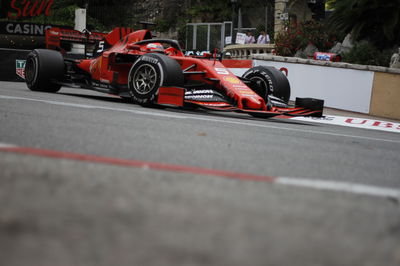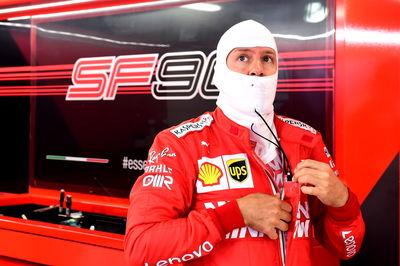Ferrari explains 2019 F1 tyre warm-up woes
Ferrari believes its warm-up related issues with Formula 1’s 2019 tyres have been complicated by the changes made by Pirelli.
F1’s tyre manufacturer introduced thinner-gauge tyres this season in a bid to reduce concerns over blistering, having successfully trailed the 0.4mm thinner compounds at three races during the 2018 campaign.

Ferrari believes its warm-up related issues with Formula 1’s 2019 tyres have been complicated by the changes made by Pirelli.
F1’s tyre manufacturer introduced thinner-gauge tyres this season in a bid to reduce concerns over blistering, having successfully trailed the 0.4mm thinner compounds at three races during the 2018 campaign.
But some teams, most notably Ferrari and Haas, have struggled to get on top of their tyre temperatures so far this season, an aspect which has hurt the Scuderia. Speaking during the Monaco Grand Prix weekend, team principal Mattia Binotto explained how the tweaks by Pirelli have made its 2019 tyres “quite different”.
"The tyres this season are quite different to the ones of last year," Binotto said during the Monaco Grand Prix weekend. "There's no blame [on Pirelli], it's only a matter of fact.
“The main difference is that last year we all had very good warm-up on the tyres, and we were all focused and concentrated on cooling the tyres as much as we can to keep them working because the lower the temps, the better the grip.
"The tyres of this season are quite different in this respect. Warm-up is a lot more difficult, and also the window - temperature targets - to get the best grip from the tyres itself - to achieve it you need to heat up the tyres. So instead of cooling them down you need to heat them up.
"How can you achieve that? Certainly you can achieve that through braking temperatures, rims cooling but overall it's downforce. No doubt.
“Certainly no doubt the downforce has absolute value but it is also how you balance the downforce high speed to low speed. It may be as well, let me say, how you may even target your aero development efficiency versus maximum downforce itself."
Ferrari’s headache has been complicated by its decision to prioritise aerodynamic efficiency over maximum downforce. While it has led the way in terms of top speed, Ferrari has lagged behind rivals Mercedes in its performance through low-speed corners, a key factor for tyre warm-up.
“I think we've got a car that's quite efficient, you can see it on the straight,” Binotto explained. "But it doesn't mean we've got the car that's got the highest downforce in the pitlane.
“Sometimes, when in discussing targets, it means that we need some more in terms of final concept, are you better looking for maximum downforce or efficiency?
“No doubt it is depending on how the tyres are working and what is required, and so overall it's an interaction between the aero itself, suspension, because how you balance your aero through the corner, and overall it's the full package.
"So, we've got a car that is overall efficient, but lacking in some certainly peak of downforce. That's what we call concepts.
“So while we are developing our car step by step, now I think it's time to question ourselves if we need to look for different overall targets how to achieve the final performance."
Ferrari heads into this weekend’s Canadian Grand Prix trailing Mercedes by 118 points in the championship having failed to record a victory, while Mercedes is going for its seventh win in a row in Montreal.












